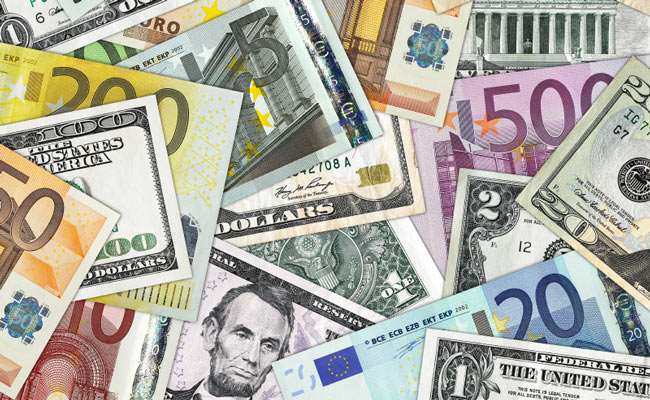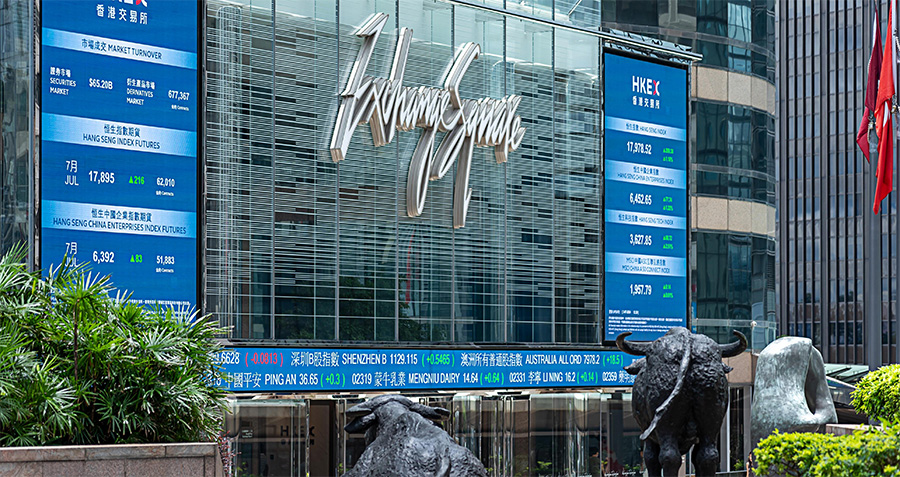As the global economy looks to emerging markets for growth, investors rush in for the high yields of emerging market bonds. But what about the risks?
Driven by close-to-zero interest rates and low treasury yields in the west, global demand for emerging market bonds has surged in the past four years; outstanding dollar debt of companies in developing nations has more than doubled to about $1.3 trillion during the period, according to Bloomberg’s data. Those bonds are giving returns of about 7.1% on average, compared with 2.4% for the investment-grade bonds of the developed countries, according to Barclays.
But higher return also means bigger risk. As growth is slowing down in emerging markets and the US is set to end quantitative easing (QE) soon, investors are not only facing weakening earning potential, but also risks associated with foreign exchange rates—even if the debt is denominated in the US dollar.
Counterintuitive as it may sound, recent research has shown that dollar-denominated bonds issued by companies in emerging markets are not free from foreign exchange fluctuations. According to a working paper co-authored by three professors from University of Miami, University of Michigan and Cheung Kong Graduate School of Business, exchange rate fluctuations can influence companies’ ability to pay back their foreign currency debt, especially when the firms’ main revenue streams are in their local currencies. Therefore, the paper argues that dollar-denominated bond investors are essentially substituting direct foreign exchange risks for hidden default risks, which can be reflected through the change in bond prices.
And for companies that issue dollar debt, although depreciation of home currencies can put huge stress on their balance sheets, they don’t have a lot of alternative financing channels due to the lack of mature fixed-income markets in their home countries.
In this interview, Robert Dittmar, Professor of Finance at the Stephen M. Ross School of Business of University of Michigan and a co-author of the paper, explained how they make the analysis and its implications for companies as well as bond investors.
Excerpts:
Q. Can you explain to us the main findings of your research?
A. Bonds issued in international markets, denominated in dollars, euros or yen, are usually sold to investors for the idea that they’re insured from any currency risks. But the problem with that logic is the following: from a company’s standpoint, you have to make a payment in dollars, but your local currency has depreciated a lot, [so it’s] going to be more difficult for you to service the debt. These things are likely to happen in times of economic stress—we get currency devaluations when the local economy is not doing so well.
And so we asked that when the local currency depreciates and the risk that the company is going to be unable to make its payment on its debt goes up, would that be reflected in the price of the bond?
Our main finding is that the bond prices themselves are in fact sensitive to currency fluctuations and they’re also sensitive to fluctuations in the volatility of the currency as well.
Q. How did you do your analysis?
A. We tried to get a sense of whether prices of these bonds co-vary with the exchange rates. We did a fairly simple regression analysis in order to analyze this. And then we look at the different types of companies and their different sensitivities to these exchange rates and see if there’re features of different kinds of companies that are more sensitive than others.
We do find, for example that if a company has a lot of dollar sales, they are less exposed to the problem than if a company has mostly local sales. A telecommunications company in Mexico has almost all of its revenue coming in Mexican pesos, so it has very little natural ability to generate dollars to pay its debt; on the other hand a Chilean mining company whose metals are sold in dollars, is much less exposed to this kind of risk.
We also did a little modeling where we were able to back out what the default risk is that’s implied in the price of the bond, and we show that there’s a sensitivity in that default risk to changes in the currency movements.
One of the crafters of this kind of hypothesis is Paul Krugman, who was the Nobel prizing winning economist from a couple of years ago. He speculated that in particular situations like the Asian currency crisis of the 1990s or the Argentinian crisis in the early 2000s, there were these balance sheet problems where firms had a very difficult time paying debt that was denominated in dollars because the values of, say, the Thai Baht or the Argentine Peso had fallen so far relative to the dollar.
[Watch video below]
Q. Are investors aware of this risk, and are they hedging the risk?
A. Given the fact that the prices are fluctuating, I think they must recognize that there’s some risk associated with this [exchange rate]. But I doubt that they’re actively hedging the currency risk that may be present in these particular bonds.
One of the things I’m curious about is—I don’t have the answer unfortunately—why we don’t have a situation where bonds are just issued in local currencies and it’s the investors that decide to hedge the risk by entering into a swap or buying a future or forwards contract. In a lot of cases it’s the way things are designed—the investors decide whether or not they want to hedge the risk.
My suspicion is that right now in a lot of emerging markets, although there’s a reasonably well-established equity market, there’re very poorly established fixed-income markets. So there’re very few opportunities for companies in emerging markets to issue bonds. They can access bank financing a lot of the time, but it’s generally more expensive than the bond markets. And equity is usually considered to be a more expensive means of financing than issuing debt.
Q. China’s high-yield junk bond market is growing. How risky are those bonds? And where do you think the demand is coming from?
A. First they’re high-yield. So certainly for US investors, the desire for high-yield debt is out there because US treasuries have very low yields, even US corporate bonds have relatively low yields. And investors view RMB in particular as an appreciating currency—we have certainly seen a large change [of exchange rate) in the last 12 months or so. And there’s very little opportunity to get directly exposed to RMB, so this is a nice vehicle for investors to do that.
And I do think there’s a belief that in China the government is more likely to step in to fix [default) problems. That difference in philosophy in government makes investors more willing to have an appetite for bonds in China than they might, say, in Latin America. Certainly we’ve seen, for example, in Argentina, there’s willingness for everything to fall apart.




















